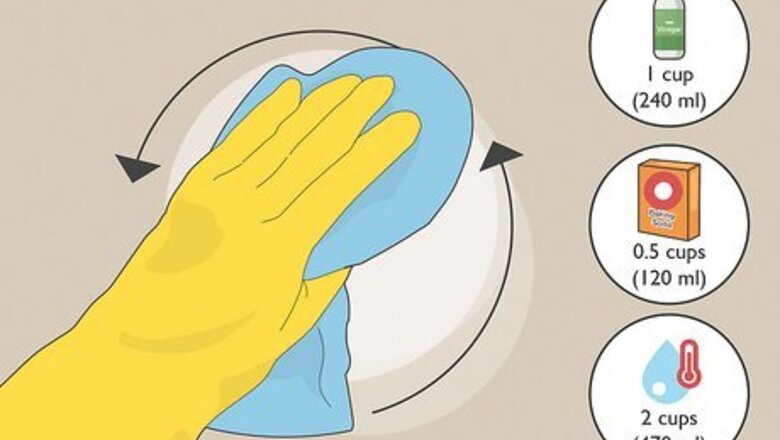
views
Washing the Walls
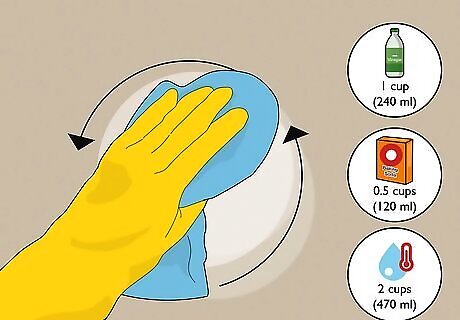
Wash the wall with white vinegar for an easy at-home remedy. Mix 1 cup (240 ml) of white vinegar with 2 cups (470 ml) of warm water and 0.5 cups (120 ml) of baking soda. Dip a clean cotton cloth into the mixture and apply the cloth to the nicotine stains, rubbing them in a circular pattern. Wipe the wall with a clean cloth or sponge after applying the mixture. You may have to repeat this process 2-3 times, so don’t give up if all of the stains don’t come off after the first try.
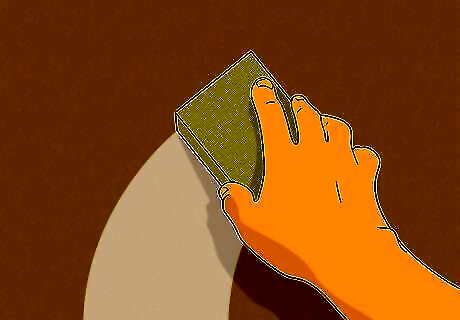
Buy a dry cleaning sponge to avoid getting your walls wet. If you’d prefer a dry method for cleaning the nicotine off your walls, purchase a dry cleaning sponge. These sponges don’t need water and can clean off the walls by soaking in the stain. Wipe the wall using single strokes, making sure not to rub the sponge around in circles on the wall. Once you see the stain on the sponge, use a razor blade to remove the top layer, making the sponge clean again. 1 dry cleaning sponge usually costs around $5. Don’t try to rinse out the sponge using water — this will cause it to no longer work.
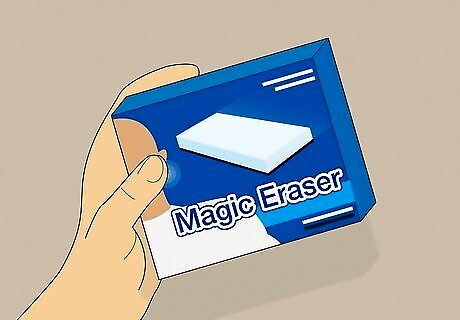
Use a commercial product for targeted stain removal. There are many products on the market that are designed to help lift stubborn stains. Whether you choose a degreaser or lean towards a product with bleach in it, try to pick a product that is odorless and more environmentally-friendly. Mr. Clean Magic Erasers are a popular choice for removing nicotine stains off of walls.
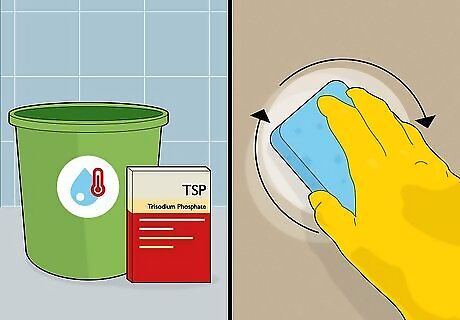
Mix TSP with warm water for a heavy-duty cleaner. TSP, or Trisodium Phosphate, is a powder that works to clean off heavy stains. Mix TSP with warm water, reading the instructions on the box to determine how much water you’ll need. Scrub the mixture onto the wall using a soft sponge, moving your hand in a circular motion. If you can’t find TSP, look for TSP-PF, which is the product without the phosphate. Wear clothes that you don’t mind getting ruined, as well as protective gloves.
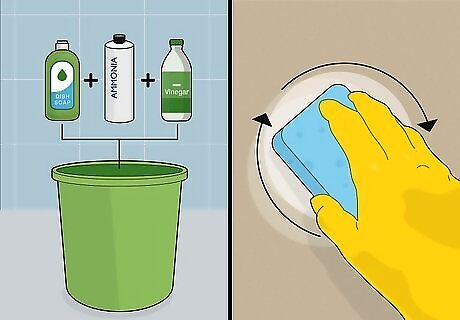
Apply an ammonia mixture to the wall if you’re able to ventilate the room. Create a mixture of 1 part ammonia and 1 part vinegar, adding in a couple squirts of dish detergent. You can mix it all together in a bucket, and then use a sponge or scrub brush to clean the walls with it. Use circular strokes and make sure the room is well-ventilated — ammonia has a very strong smell. Wear gloves and goggles when working with ammonia, and put on old clothes in case they get messed up.
Painting the Walls
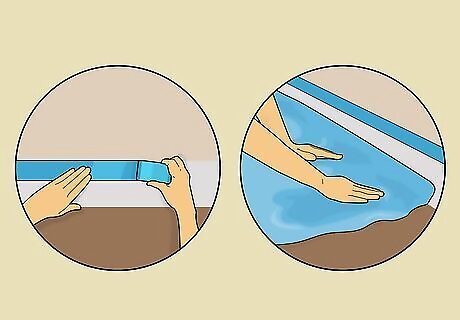
Prepare the room to be painted. If you've already moved all the furniture out of the way and put down plastic before washing the walls, great! If not, move your furniture out of the way so that it won't get paint on it during the painting process. Put plastic or a drop cloth down on the floor to catch any paint drips, making sure it goes all the way to the wall's edge. If necessary, put painter's tape on any edges that you don't wish to be painted.
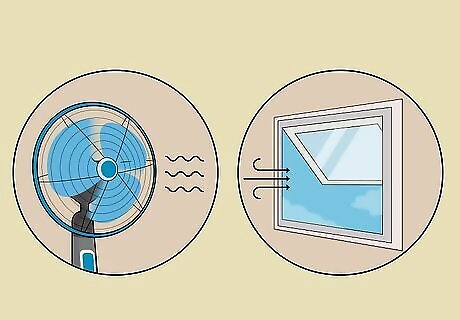
Make sure the room is well-ventilated. Paint fumes can be very over-powering and aren't super healthy to breathe in, so make sure your room has access to fresh air. Turn on a fan, open a door, or push open the windows to make sure the room is ventilated and air isn't stagnant.
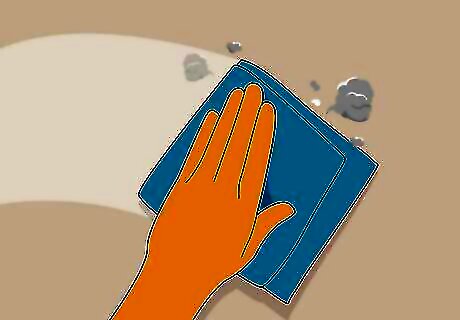
Wipe down the wall with a damp sponge or cloth to remove any dirt or debris. If you want to paint your walls after removing the nicotine stains, you’ll want to make sure the wall is free of any dust or dirt. Use a slightly damp cloth — or a clean, dry cloth, if you don’t want to use water on the wall — and wipe the wall down thoroughly.
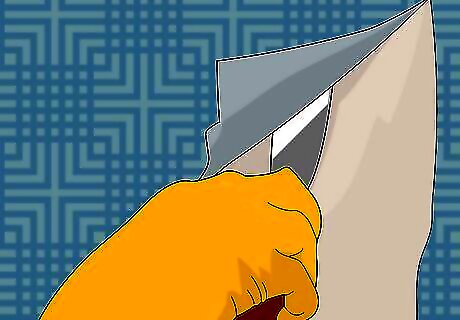
Take down any wallpaper on your walls, if necessary. If the nicotine stains are on wallpaper, you’ll need to remove the wallpaper before painting. Use a scoring tool to create holes in the wallpaper before spraying the wallpaper with a spray bottle full of water to dampen the paper. Then you’ll be able to scrape the wallpaper off using a plastic putty knife.
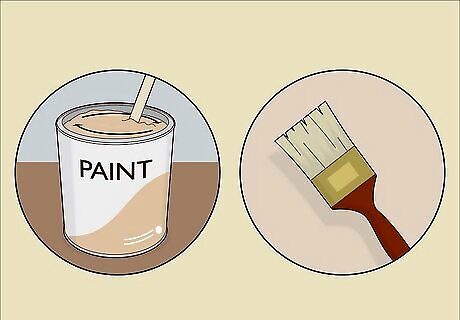
Mix your paint so that it's ready to use and gather paint brushes. After you've opened your primer or final paint color, use a mixing tool, such as a wooden mixing stick, to mix up the paint. Swirl the paint around carefully and slowly so that nothing splatters. If you're using a roller, set up the tray that the roller will go in, pouring in just enough paint to cover your roller completely. If you're using regular paint brushes, set up a clean cup or container that you can set the brush in.
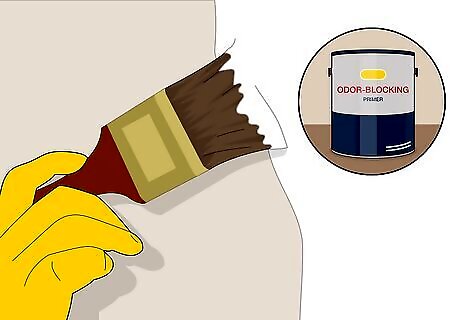
Apply an odor-blocking primer to your walls. To make sure your walls remain stain-free, it’s best to apply an odor-blocking primer before painting your walls the desired color. The primer will help prevent stains from leaking through, as well as any bad smells. You can find an odor-blocking primer at a home improvement store or online, and 1 gallon (3.8 L) typically costs $15-40. Try to avoid using a primer that’s water-based. The water lets stains soak through more easily.
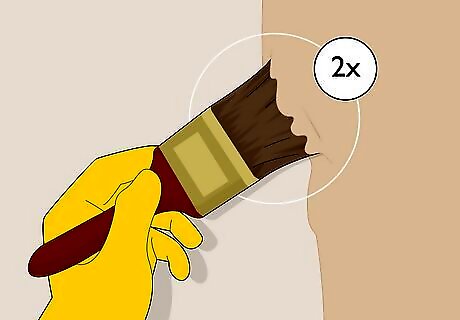
Paint the walls with at least 2 coats of latex paint. Once the primer is dry, you can start painting using your desired interior paint color. If your stains didn’t come off the wall very well due to being so soaked through, you may have to paint several layers of normal paint. It’s recommended that you paint at least 2 coats, letting each coat dry first before continuing.




















Comments
0 comment